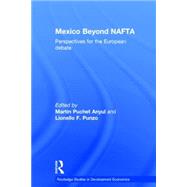
Note: Supplemental materials are not guaranteed with Rental or Used book purchases.
Purchase Benefits
What is included with this book?
|
xi | ||||
|
xiv | ||||
| Acknowledgments | xv | ||||
| Preface | xvi | ||||
| Notes on contributors | xxiii | ||||
| PART I Paths to convergence and monetary union(s) | 1 | (50) | |||
|
3 | (18) | |||
|
|||||
|
|||||
|
4 | (7) | |||
|
11 | (3) | |||
|
14 | (7) | |||
|
21 | (30) | |||
|
|||||
|
|||||
|
22 | (3) | |||
|
25 | (1) | |||
|
26 | (4) | |||
|
30 | (5) | |||
|
35 | (16) | |||
|
46 | (5) | |||
|
|||||
| PART II Mexico's foreign sector, the exchange rate, trade and productive structures | 51 | (70) | |||
|
53 | (25) | |||
|
|||||
|
53 | (13) | |||
|
66 | (6) | |||
|
72 | (6) | |||
|
78 | (24) | |||
|
|||||
|
78 | (2) | |||
|
80 | (9) | |||
|
89 | (1) | |||
|
90 | (12) | |||
|
102 | (19) | |||
|
|||||
|
103 | (3) | |||
|
106 | (6) | |||
|
112 | (9) | |||
|
115 | (6) | |||
|
|||||
|
|||||
| PART III Sectorial performance in manufacturing, industrial organization and the innovation system during the trade liberalization process | 121 | (76) | |||
|
123 | (24) | |||
|
|||||
|
123 | (5) | |||
|
128 | (13) | |||
|
141 | (6) | |||
|
147 | (27) | |||
|
|||||
|
148 | (2) | |||
|
150 | (1) | |||
|
151 | (2) | |||
|
153 | (4) | |||
|
157 | (3) | |||
|
160 | (8) | |||
|
168 | (6) | |||
|
174 | (23) | |||
|
|||||
|
|||||
|
175 | (2) | |||
|
177 | (3) | |||
|
180 | (6) | |||
|
186 | (11) | |||
|
190 | (7) | |||
|
|||||
|
|||||
| PART IV Regional divergence and structural policies | 197 | (90) | |||
|
199 | (44) | |||
|
|||||
|
|||||
|
201 | (3) | |||
|
204 | (2) | |||
|
206 | (4) | |||
|
210 | (3) | |||
|
213 | (3) | |||
|
216 | (17) | |||
|
233 | (10) | |||
|
243 | (19) | |||
|
|||||
|
243 | (3) | |||
|
246 | (1) | |||
|
247 | (2) | |||
|
249 | (7) | |||
|
256 | (2) | |||
|
258 | (4) | |||
|
262 | (25) | |||
|
|||||
|
|||||
|
262 | (2) | |||
|
264 | (2) | |||
|
266 | (4) | |||
|
270 | (7) | |||
|
277 | (1) | |||
|
278 | (9) | |||
|
281 | (6) | |||
|
|||||
|
|||||
| Index | 287 |
The New copy of this book will include any supplemental materials advertised. Please check the title of the book to determine if it should include any access cards, study guides, lab manuals, CDs, etc.
The Used, Rental and eBook copies of this book are not guaranteed to include any supplemental materials. Typically, only the book itself is included. This is true even if the title states it includes any access cards, study guides, lab manuals, CDs, etc.